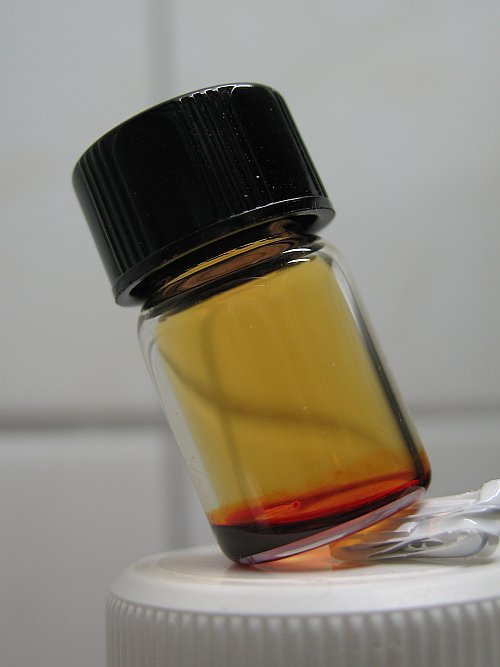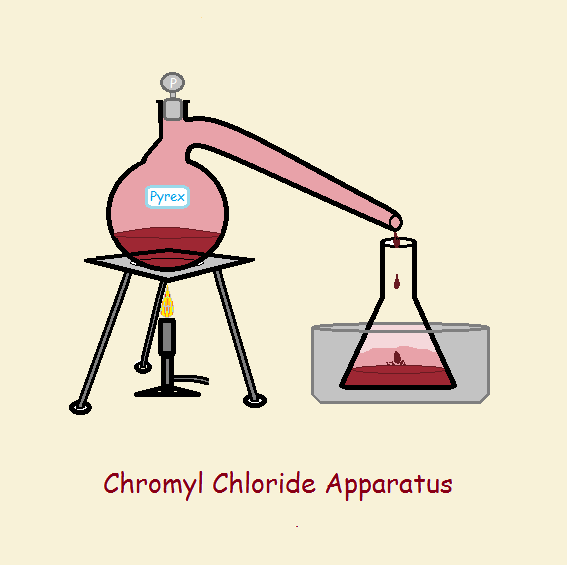
When I was young, I’d sign out chemistry books from three libraries. One of these was the local public library. Another was my high school library. Yet another favorite library was the one at Franklin Institute in Philadelphia. A special favorite book was a thin, early volume featuring the writings of Russian chemist, Dmitri Mendeleev (1834-1907).
That volume was published in the late 1800s. Its pages were old—its recipes enticing. One of those recipes was for the making of a compound of the element chromium, a red-brown volatile liquid. A chromyl chloride preparation! I would learn first hand what it was like. But I needed some specialized laboratory equipment and supplies.
I needed a retort, a burner, a stand, and a collection flask that would be submersed in ice water. The chemicals I needed were potassium dichromate, sodium chloride, and concentrated sulfuric acid. The chemical reaction was,
K₂Cr₂O₇ + 4 NaCl + 3 H₂SO₄ → 2 CrO₂Cl₂ + K₂SO₄ + 2 Na₂SO₄ + 3 H₂O
As I recall it, the potassium dichromate and sodium chloride were thoroughly mixed and melted, then cooled. Next it was fractured into small pieces and placed in the bottom of the retort. The sulfuric acid was added, and the retort was heated. The approximate setup is seen in the image provided.

Voila! Chromyl Chloride Preparation Fumes
Slowly the reddish-brown fumes rose from the mixture in the retort, much resembling liquid bromine. In fact, the fumes (for I could detect an odor, carrying out this reaction in my basement home laboratory without a fume hood) smelled something like it.
Due to the folly of youth, I was somewhat overcome by the fumes. I wheezed considerably. I was frightened over the incident and was relieved when my breathing improved. In fact, for years afterward, I believed my health was compromised.
During my college years I related my experience. I was tested for chromium poisoning, and the first test indicated my health had been compromised. A repeat was then carried out, which suggested the first test had been in error.

The Take Home for You
Never try what I was foolish enough to do. Not only were my lungs at risk, but chromium is a heavy metal and a known carcinogen. I may yet wind up paying dearly for my endeavor. On the other hand, it was fascinating, duplicating a chemical reaction undertaken during the 1800s by a famous Russian chemist. And a liquid metal compound reaction at that… chromyl chloride preparation! If only I’d carried it out in a location offering adequate ventilation.
Note: You might also enjoy Pyrophoricity – How Does It Work?
← Back to Classic Science
← Home

I am hopeful you suffered only mild effects from the exposure. Did Mendeleev have any respiratory problems from his own experiments with these chemicals? I imagine he too had some exposure from them.
Maybe he had, but he died at 73. Hard to tell. He certainly made an impression in the world of chemistry. He and one or two others established the periodic table of the elements, even predicting the appearance of an element or two that had not at the time been discovered. And he did it complete with properties.